There is a tool that has been around for over million years, that archaeologists keep finding in caves, ditches, wells, and prehistoric settlements. They’re older and more ubiquitous than wheels, than pottery, than pretty much anything else. They’re everywhere, but nobody can agree what they’re for.
I’m talking about… hand axes.
You know, hand axes:
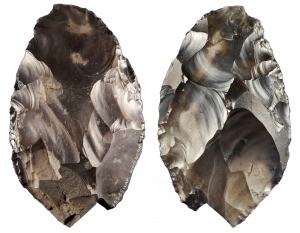
You’ve seriously never heard of hand axes?
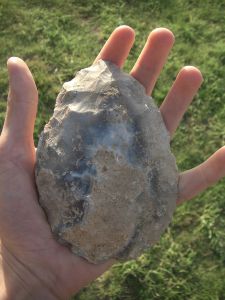
Don’t worry, I hadn’t either. But now that I have, I think they’re fascinating.
I’ve been listening to the back catalogue of 99% Invisible recently and yesterday I came across this episode from 2014: Genesis Object. In it, Roman Mars interviews anthropologist Terrence Deacon and designer Will Lidwell and they explore Acheulean hand axes as the first human-designed objects. You should take 15 minutes and listen, it’s great.
A potted history of the hand axe
The basic premise of a hand axe is this: take a rock like chert or flint that flakes easily. Take another, harder, rounded rock and smack it into your chert until it breaks off, leaving a sharp edge behind. This is called knapping. Turn, and repeat. After a while, you’ll be left with a hand axe.
Our proto-human ancestors Homo erectus figured this out around 1.6 million years ago and they started knapping away. We’ve found hand axes from Southern Africa all the way up to the UK and as far east as India. They all basically look the same, with some variation in size, shape, and workmanship.
The crazy part is this: for more than a million years, these Acheulian hand axes were the dominant hominid tools on Earth. They stayed remarkably consistent across time and space and were only significantly improved upon about 150 thousand years ago (kya), when Neanderthals started getting Mousterian.
To put that into perspective, agriculture and history as we know it started about 10 kya. It took proto-humans a hundred times longer to go from this:
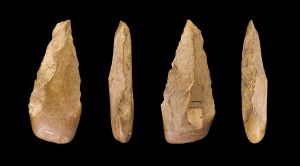
to this:
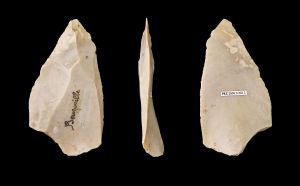
than it’s taken us to go from this:
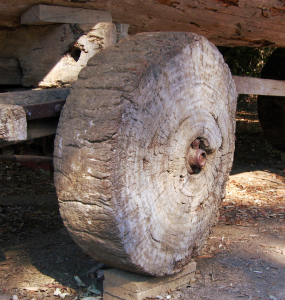
to this:

This just reinforces a common sense idea: technological progress is exponential. (Just watch this In a Nutshell video if you needed more convincing of that).
The mystery of the hand axe
So what made hand axes so amazing if they were used basically everywhere for basically forever?
We don’t know.
There are some guesses, though.
They could have been used as killer frisbees to maim animals. That helps explain how some of them are kind of aerodynamic, but we know javelins had been invented by that point, so nobody puts much weight behind that theory.
Another notion is that they might have been used for sexual selection. A guy who has the strength, time, resources, skill, and hand-eye coordination to make an awesome symmetrical hand axe is probably a guy worth keeping around. So even if they weren’t actually good for anything, people made them to look sexy.
Unfortunately, a 2009 paper pokes some significant holes in that theory. The authors basically argue that there’s no proof ancient hominins even liked symmetry, that the ability to make symmetrical hand axes is heritable, or that the hand axes are even as symmetrical as people say! The debate goes on though. Last month, archaeologists published a paper in Evolutionary Anthropology arguing that, like bird-song, the making of Acheulian hand axes must have been partially genetic.
The prevailing theory at the moment seems to be that they were general-use tools. There is evidence that some were used for digging, others for butchering. More specialized, smaller tools made from the flakes could be used for specific purposes, but a hand-axe with some blade-like elements, some notches, and some heft could be used for lots of different things. This sounds like a bit of a cop-out to me and doesn’t explain how you use them if they’re sharp all the way around or why they stayed so consistent across millennia and continents.
While archaeologists continue to study these tools with modern methods, we might never be able to figure out their true purpose. I find it astounding that something could be passed down for five hundred times longer than there have even been modern humans and that we could forget it. It’s not just the ubiquity, but also the longevity that strike me as incredible .
It seems obvious that our current civilization has left a more significant mark on the world than Homo erectus did with their hand axes, but if we can forget what a hand axe is for, what else could we forget?

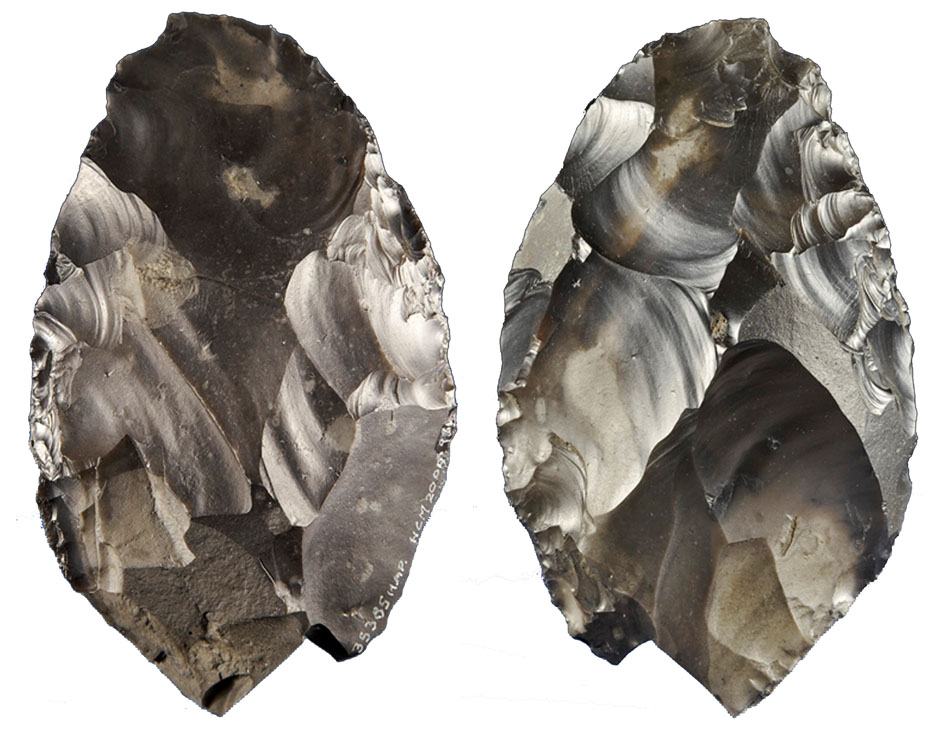
One Reply to “”